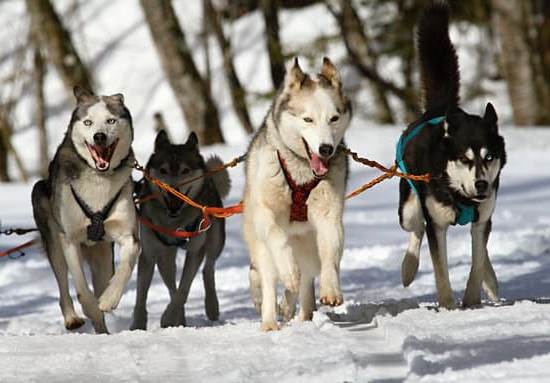Training your dog can be a rewarding and fulfilling experience for both you and your furry companion. By learning how to train your dog to do what you want, you can establish clear communication, strengthen your bond, and set the foundation for a harmonious relationship. Understanding the importance of dog training is crucial to ensure that you and your pet have a positive experience together.
Dog training goes beyond teaching basic commands; it is about creating a positive environment where your dog feels safe, understood, and appreciated. Setting clear goals is essential in defining what behaviors you want your dog to learn, whether it is obedience commands, manners, or specialized tasks. Through training, you can guide your dog towards desired behaviors and address any unwanted habits effectively.
Building a strong bond with your dog is key to successful training. Developing a relationship based on trust, respect, and love will enhance your communication skills and make the training process more enjoyable for both parties.
Positive reinforcement techniques, consistency in training sessions, effective communication strategies, problem-solving skills, and celebrating successes are all vital components of a comprehensive training program. So let’s dive into the world of dog training and discover how you can empower yourself to train your furry friend effectively.
Setting Clear Goals
When it comes to training your dog, one of the most crucial steps is setting clear goals. Defining what you want your dog to learn will help you create a focused training plan and track progress effectively.
Whether you want your furry friend to master basic obedience commands or more advanced tricks, having specific objectives in mind is essential. By establishing clear goals, you provide direction not only for yourself but also for your dog, making the training process more structured and efficient.
To train your dog to do what you want, start by breaking down each desired behavior into smaller achievable tasks. For example, if you aim to teach your dog how to sit on command, begin with capturing the behavior every time your dog naturally sits and then adding a verbal cue.
Gradually phase out the lure or prompt until your dog reliably responds to the command alone. By dividing the learning process into manageable steps, you set both yourself and your dog up for success.
In addition to setting clear goals for training, it’s important to remember that consistency plays a vital role in achieving desired behaviors. Dogs thrive on routine and repetition, so maintaining a regular training schedule will help reinforce learning.
Consistency also means using the same cues and rewards each time to avoid confusion. Whether you’re teaching basic manners or more complex skills, staying consistent in your approach will support your dog in understanding what is expected of them and facilitate their learning process.
| Key Point | Details |
|---|---|
| Importance of Setting Clear Goals | Defining what you want your dog to learn helps create a focused training plan. |
| Breaking Down Behaviors | Dividing behaviors into smaller tasks makes training more achievable. |
| The Role of Consistency | Maintaining a regular training schedule reinforces learning and avoids confusion. |
Building a Strong Bond
In order to strengthen your relationship with your furry companion, it is important to understand their unique personality, preferences, and behaviors. Every dog is different, so taking the time to observe and learn about what motivates them can greatly improve the training process.
By understanding their needs and desires, you can tailor your training approach to suit their individual characteristics and create a more effective learning environment. Additionally, incorporating playtime, walks, and interactive games into your daily routine can help foster a deeper connection with your dog outside of formal training sessions.
Furthermore, building a strong bond with your dog involves being patient, consistent, and understanding throughout the training process. Dogs thrive on positive interactions and reinforcement from their owners, so being gentle yet firm in your guidance can help build mutual trust and cooperation.
Remember that training is a journey that requires time, effort, and dedication from both you and your dog. By investing in your relationship with them and providing a loving environment for learning, you can effectively teach them how to do what you want while strengthening the special bond between you.
Positive Reinforcement Techniques
One of the primary benefits of using reward-based training methods is that they create a positive association with obedience and learning. When a dog performs the desired behavior and receives a reward, they are more likely to repeat that behavior in the future.
This creates a cycle of positive reinforcement that makes training sessions enjoyable for both you and your dog. Additionally, positive reinforcement helps build trust and confidence in your dog, leading to a stronger relationship based on mutual respect.
To effectively implement reward-based training methods, it’s essential to be consistent with your rewards and timing. Make sure to reward your dog immediately after they perform the desired behavior to reinforce the connection between the action and the reward. This consistency helps your dog understand what is expected of them and motivates them to continue following commands. Remember to keep training sessions short and engaging to prevent boredom or frustration for your furry friend.
| Benefits of Positive Reinforcement | Importance of Consistency |
|---|---|
| Creates a positive association with obedience and learning | Reinforces the connection between action and reward |
| Builds trust and confidence in your dog | Motivates dogs to continue following commands |
Consistency Is Key
Consistency is indeed key when it comes to training your dog to do what you want. By establishing a routine for training sessions, you can help your furry friend understand expectations and progress more effectively. Here are some tips on how to maintain consistency in your training:
- Set a regular schedule: Determine specific times each day for training sessions. Dogs thrive on routine, so having consistent training times will help them focus and learn faster.
- Use the same commands: Be sure to use the same verbal cues and hand signals every time you give a command. This will prevent confusion and ensure that your dog understands what is expected of them.
- Reinforce good behavior consistently: Whether it’s with treats, praise, or playtime, make sure to reward your dog immediately when they exhibit the desired behavior. Consistent positive reinforcement will reinforce the behavior you want to see more of.
In addition to maintaining a consistent schedule and using the same commands, it’s essential to create a distraction-free environment during training sessions. Minimize noise and other distractions that could divert your dog’s attention away from learning. Patience is also crucial – remember that every dog learns at their own pace, so be patient and persistent in your efforts.
Ultimately, by establishing a routine for training sessions and sticking to it diligently, you can effectively teach your dog how to respond to your commands and behave in a way that aligns with your expectations. Consistency not only helps in shaping desired behaviors but also strengthens the bond between you and your canine companion through shared experiences and mutual understanding.
Communication Is Vital
Effective communication plays a crucial role in training your dog to do what you want. It is essential to establish a clear and consistent means of communication in order to convey your expectations and commands effectively. Dogs rely on verbal cues, body language, and tone of voice to understand what is being asked of them. By developing a strong communication system with your furry companion, you can build trust and strengthen the bond between you.
Understanding Your Dog’s Signals
One way to enhance communication with your dog is by learning to recognize their body language and signals. Dogs communicate through various behaviors such as wagging their tail, barking, whining, or making eye contact. By paying attention to these cues, you can better understand how your dog is feeling and responding to different situations. This knowledge will enable you to adjust your training approach accordingly and address any confusion or stress that may arise during the training process.
Using Consistent Commands
Consistency in the commands you give to your dog is key to effective communication. Use clear and concise words or gestures for each behavior you want to train. For example, if you are teaching your dog to sit, use the same verbal cue every time like “sit” or a hand signal that corresponds with the action.
By using consistent commands, your dog will learn to associate specific actions with certain cues, making it easier for them to understand what is expected of them. Remember to be patient and repetitive in your training sessions as repetition helps reinforce learning for dogs.
Listening to Your Dog
Communication is a two-way street when it comes to training your dog. It’s not just about giving commands but also about listening and observing how your dog responds. Pay attention to their reactions, behaviors, and body language during training sessions.
If you notice confusion or resistance from your dog, take a step back and reassess your approach. Understanding when your dog needs a break or when they are ready for more challenges is crucial in fostering healthy communication and successful training outcomes. By establishing open lines of communication with your canine companion, you can build a stronger relationship based on mutual understanding and cooperation.
Problem Solving
When it comes to training your dog to do what you want, it is common to encounter various challenges along the way. From stubborn behaviors to distractions, addressing these obstacles is crucial in achieving successful training outcomes. By understanding and effectively dealing with common training challenges, you can progress towards your goals and strengthen the bond with your furry companion.
Identifying the Root Cause
One of the first steps in problem-solving during dog training is identifying the root cause of the behavior or issue at hand. Is your dog not responding to commands because they are unsure of what is expected, or are there underlying reasons such as fear or anxiety? By pinpointing the underlying cause, you can tailor your training approach accordingly. It’s essential to observe your dog’s body language and reactions to better understand their behavior.
Implementing Targeted Solutions
Once you have identified the root cause of a training challenge, it’s time to implement targeted solutions. Whether it involves modifying your training techniques, adjusting your communication style, or introducing new cues, addressing the specific issue directly can lead to significant improvements. For example, if your dog is easily distracted during training sessions, consider gradually increasing their focus by practicing in a quiet environment before introducing distractions gradually.
Seeking Professional Guidance
In some instances, resolving training challenges may require professional guidance from experienced trainers. Professional trainers can offer valuable insights, personalized strategies, and hands-on assistance in tackling complex behavior issues. Consulting with experts can provide you with additional tools and techniques to overcome persistent challenges effectively. By seeking expert advice when needed, you can enhance your training efforts and guide your dog towards successfully meeting your expectations.
Celebrating Success
Training your dog to do what you want requires patience, consistency, and positive reinforcement. One crucial aspect of successful dog training is acknowledging and celebrating your furry friend’s achievements and progress along the way. By recognizing their efforts and improvement, you not only boost their confidence but also strengthen your bond with them.
When your dog successfully learns a new command or behavior that you’ve been working on, it’s essential to offer praise, treats, or even a favorite toy as a reward. Celebrating these small milestones encourages them to continue learning and obeying commands. Additionally, positive reinforcement creates a positive association with training sessions, making them more enjoyable for both you and your dog.
In addition to tangible rewards, celebrating success can also involve verbal praise, pets, or even a special playtime session. Expressing excitement and happiness when your dog follows commands correctly reinforces their good behavior and motivates them to repeat it in the future. Remember that consistent acknowledgment of your dog’s achievements is key to fostering a strong relationship built on trust and mutual understanding.
By celebrating success during training sessions, you create a fun and engaging environment for your dog while reinforcing desired behaviors. This positive approach not only helps in teaching new skills but also in strengthening the bond between you and your pet. So next time your furry companion masters a new trick or behaves well during a walk, don’t forget to celebrate their success-it’s an important part of helping them become the well-trained companion you desire.
Expert Advice
Training your dog to do what you want can be a rewarding but challenging process. Sometimes, despite your best efforts and dedication, you may find yourself facing obstacles or struggling to make progress with your furry friend. In these situations, seeking expert advice from professional trainers can be incredibly beneficial. Professional trainers have the knowledge, experience, and skills to help guide you through advanced training techniques that may be necessary for more complex behaviors.
When consulting a professional trainer for advanced training tips, it is essential to choose someone who aligns with your training philosophy and values. Look for a trainer who uses positive reinforcement methods and focuses on building a strong bond between you and your dog. This will ensure that the training remains effective while maintaining a positive and healthy relationship with your pet.
Professional trainers can provide personalized guidance based on your dog’s unique needs and behavior traits. They can offer insight into why certain behaviors are occurring and develop tailored strategies to address them effectively. By working closely with a professional trainer, you can gain valuable knowledge on how to train your dog to do what you want in a way that fosters trust, respect, and understanding between you and your canine companion.
Conclusion
In conclusion, successfully training your dog to do what you want is a rewarding journey that not only shapes their behavior but also strengthens the bond between you and your furry companion. By following the outlined steps in this guide, including setting clear goals, using positive reinforcement techniques, maintaining consistency, and improving communication, you can effectively teach your dog new behaviors and commands. Remember that patience, dedication, and understanding are essential in this training process.
Building a strong partnership with your dog through training goes beyond just obedience; it fosters trust, respect, and mutual understanding. Celebrate the small victories along the way to keep both you and your dog motivated and engaged in the learning process. Whether it’s learning basic commands or addressing specific behavioral issues, every step taken towards a well-trained dog contributes to a fulfilling relationship based on cooperation and teamwork.
As you continue on this training journey with your canine companion, don’t hesitate to seek expert advice from professional trainers if needed. Their experience and knowledge can offer valuable insights into advanced techniques for training your dog effectively.
Remember that every dog is unique, so tailoring the training approach to suit their individual needs and personality will result in a happier and more obedient pet. Stay committed to the process, show love and patience towards your furry friend, and enjoy the lifelong partnership you are building through positive reinforcement training methods.
Frequently Asked Questions
How Do I Get My Dog to Do What I Want?
Building a strong bond with your dog is crucial to getting them to do what you want. Consistent training, positive reinforcement, and patience are key in communicating your expectations effectively to your furry friend.
What Are the 7 Commands to Train a Dog?
The seven basic commands to train a dog include sit, stay, come, down, heel, no, and leave it. Each command serves a specific purpose in obedience training and helps establish clear communication between you and your dog.
How Do You Discipline a Dog That Doesn’t Listen?
When disciplining a dog that doesn’t listen, it’s important to remain calm and consistent in your approach. Use positive reinforcement for good behavior and redirect their attention when they misbehave. Avoid physical punishment as it can lead to fear or aggression in your pet.

Welcome to the blog! I am a professional dog trainer and have been working with dogs for many years. In this blog, I will be discussing various topics related to dog training, including tips, tricks, and advice. I hope you find this information helpful and informative. Thanks for reading!





